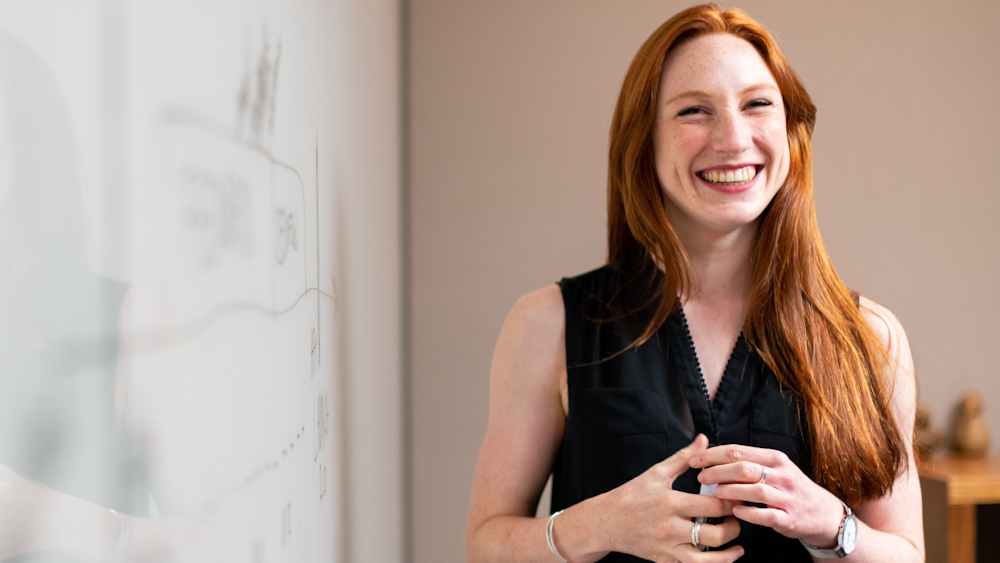When teaching Europeans, ESL tutors spend a lot of time explaining the difference between the simple past vs. present perfect and, the present perfect vs. present perfect continuous. Here are some exercises to help your students understand the difference.
Simple past vs. present perfect
The difference between these two tenses is all about the time. We use the simple past when the action occurs in a time-frame that is finished. Another way to say this is ‘closed time.’
For example: ‘Steve played tennis yesterday.’
We use the present perfect when the action occurs in a time frame that continues. Another way to say this is ‘open time.’ Note: With present perfect, usually the action is finished, but it’s the time that continues.
For example: ‘Jane has eaten an apple this week.’ Jane finished eating the apple in the past but this week continues.
Simple past vs. present perfect activity
Help your students distinguish between these two tenses, with this activity.
Step one: Explain the ‘closed time,’ ‘open time’ concept.
Step two: Ask your student to give you examples using closed time markers such as ‘yesterday’, ‘last week’, ‘last year’ and open time markers such as ‘today’, ‘this week’, ‘this year.’
Step three: Next, ask your student to imagine that it is 3pm.
Step four: You say a time marker and ask your student whether it is open time or closed time. Each time they answer, ask them to give you an example. Make the time-frame gradually smaller until you end with ’10 minutes ago.’
Time frames
| Closed time | Open time |
| Yesterday | Today |
| Last week | This week |
| Last month | This month |
| Last year | This year |
| This morning | This afternoon |
| 2pm | This hour |
| 10 minutes ago | So far |
| In the last few hours, days, weeks, months, years. |
Step five: Finally, get your student to answer these questions using the past simple or present perfect. Then practice the other tense by saying things like: ‘And this week?’
Simple past vs. present perfect drill.
- How many coffees did you drink yesterday? (past simple)
- And today? (present perfect)
- How many packages have you sent this week?
- And last week?
- How many emails did you write this morning?
- And this afternoon?
- How many people did you see yesterday?
- And today?
- How many times have you gone to the gym this month?
- And last month?
Continue until your student understands the difference between the two tenses.
Present perfect vs. present perfect continuous
We use the present perfect continuous when the action starts in the past and continues to the present. For example: ‘She has been working for the company for 5 years.’
With the present perfect, the action has usually finished but in a time-frame that continues. For example: ‘I have watched two films this week.’ Watching the films happened in the past, but the week continues.
However, state verbs such as, ‘to have’ for possession and ‘to know,’ cannot usually be put into continuous tense. Therefore, we use the present perfect if the action continues and not the present perfect continuous.
For example: ‘I have known John for 10 years’, not, ‘I have been knowing John for 10 years’ or ‘how long have you had that pen?’ not, ‘how long have you been having that pen.’
Common state verbs are:
Opinions: To love, to like, to have, to think (as in opinion), to believe, to prefer, to appear, to seem, to suppose.
Descriptions of things: To belong, to contain, to exist, to consist, to be + adjective.
Also: To know, to understand, to have (as in possession), to remember.
State verbs that double as action verbs
Some verbs, however, can be either an action or a state as they have two meanings. These are:
Think: Is a state when it is an opinion; ‘She thinks France is a lovely country’ and an action when speaking about ideas; ‘He is thinking about going on holiday.’
Have: Is a state when it talks about a possession; ‘He has a car’ and an action when talking about ‘having food’ or ‘having a good time.’
Remember: Is a state when talking tasks; ‘Remember to turn off the light’ and an action when talking about memories; ‘He sat on the porch, remembering his Grandfather.’ This is mainly used in literature.
Homework: present perfect vs. present perfect continuous activity
Help your students understand when to use the present perfect and when to use the present perfect continuous, with this exercise for homework.
Copy of the present perfect vs. present perfect continuous activity
Melissa and John (1. to be married) for 10 years. Melissa (2. work) for her company for 10 years. She has also (3. study) for her MBA for the last two years.
John owns a furniture company. He (4. have) his company for 5 years. This week John (5. sell) 10 dining tables and 5 sofas.
Melissa and John (6. live) in their apartment for 8 years. They live next door to a young couple. They (7. known) their neighbours for three years. John likes home improvement. He (8. paint) the terrace for two weeks. It is a large terrace and he (9. use) two pots of paint already.
Melissa and John are looking after a friend’s dog called Sam. Sam (10. have) a long walk today and so he is happy. He (11. stay) with Melissa and John for quite a long time – over two weeks already.
Melissa and John don’t mind. They (12. enjoy) the company. Sam likes to watch the wildlife in the garden. He (13. chase) three cats around the garden so far.
Answers
1 have been married, 2. has been working, 3. has been studying, 4. has had, 5. has sold, 6. have been living, 7. have known, 8. has been painting, 9. has used, 10. has had, 11. has been staying, 12. have been enjoying, 13. has chased.
Final thoughts
We hope that exercises prove useful for your classes and students. If you’d like any other grammar exercise, please leave your suggestions in the comments below.

